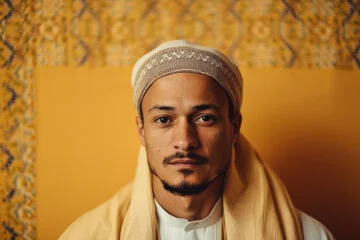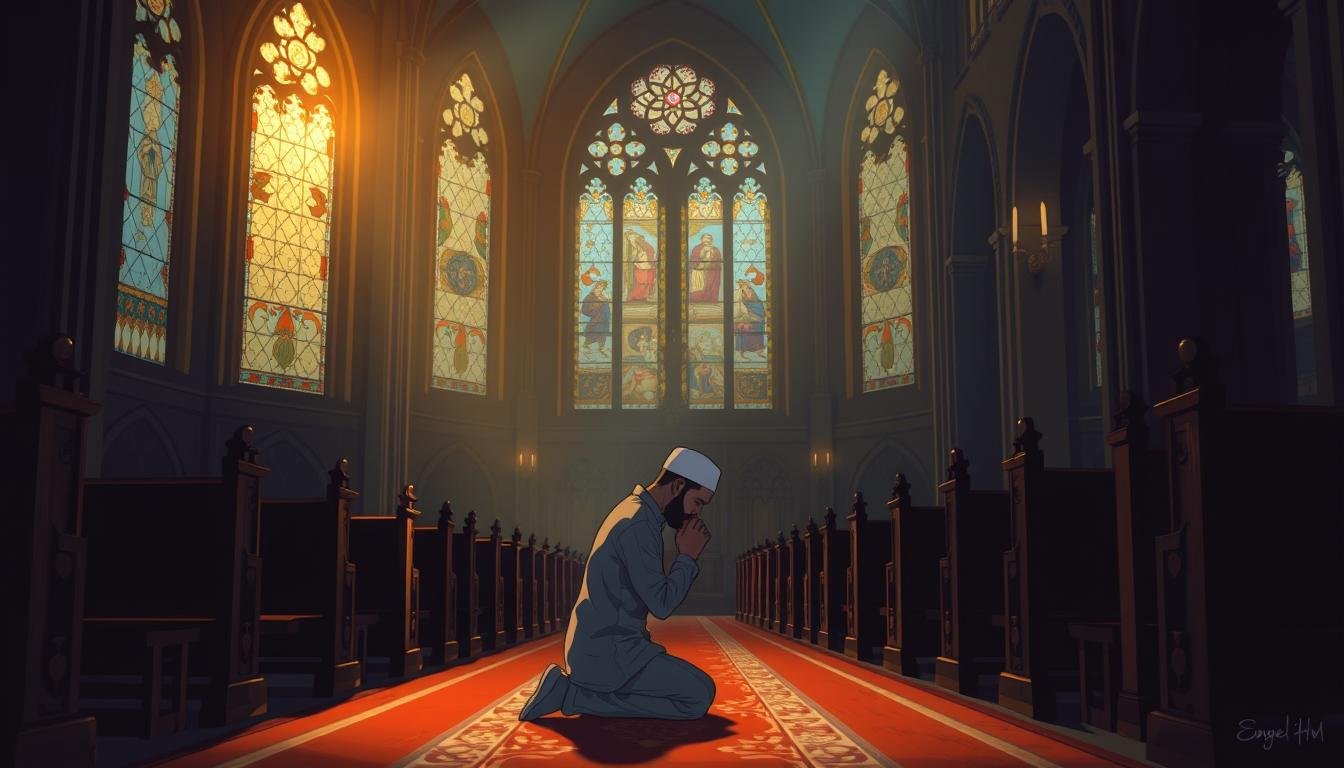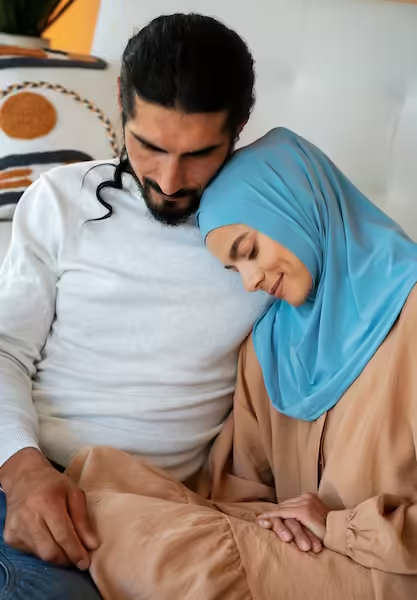During a family trip, I wondered if a Muslim could pray in a church. This question connects cultures, faiths, and centuries. In the UK, 40 Mahabba prayer groups are changing how we see shared spaces.
But, debates like the St John’s Church incident show it’s a complex issue. It divides communities deeply.
Many find it strange for Muslims to pray in churches. Is it okay? Is it respectful? The answer comes from Islamic teachings and modern efforts to bring faiths together.
This article will dive into the details. We’ll look at Quranic teachings and stories like the Inclusive Mosque Initiative’s International Women’s Day event. We’ll see why some see these spaces as bridges, while others see them as boundaries.
Every prayer mat asks a question: How do we respect both faiths without losing either? Let’s explore this together. Whether you’re looking for a prayer spot, leading interfaith talks, or just curious about faith’s role in our world.
Understanding the Islamic Perspective on Prayer Locations
At the heart of islamic prayer rules is a key idea. The whole earth is seen as pure for worship. The Prophet Muhammad (peace be upon him) taught that the earth is a place for prostration.
This teaching makes it clear that Muslims can pray almost anywhere. But, there are certain conditions for these islamic guidelines on prayer locations.
“Wherever a person stands in truth, they stand in a house of God.” – A saying reflecting interfaith harmony
First, purity (taharah) is more important than where you pray. Islamic prayer rules focus on being clean, both physically and morally. A place must be free from dirt or symbols of idol worship.
Even in unexpected places like a public square, prayer is valid. This is if the basic conditions are met.
The Concept of Pure Earth in Islamic Prayer
The Prophet prayed in deserts and homes, showing no sacred space monopoly. The Kaaba’s centrality as qibla (prayer direction) symbolizes unity, not exclusivity. This reflects Islam’s universal message: worship transcends architecture.
What Makes a Location Suitable for Muslim Prayer
Flexibility exists in islamic guidelines on prayer locations. While mosques offer ideal acoustics and community, prayer can occur anywhere. This includes airports, offices, or even shared spaces.
What matters most is the intent and focus on Allah.
General Islamic Guidelines for Prayer Spaces
Scholars agree on avoiding locations tied to idol worship. But modern scenarios—like interfaith events—show adaptability. The Prophet’s welcome of a Christian delegation praying in his mosque shows respect without compromising core principles.
Ultimately, prayer locations reflect a balance between tradition and real-world needs. As we explore further, these principles shape discussions on praying in churches and beyond.
Can a Muslim Pray in a Church According to Islamic Theology?
Islamic teachings offer clear guidance on where to pray. They answer questions like muslims praying in churches with Quranic rules and expert views. The Prophet Muhammad said “the entire earth is a mosque,” showing flexibility but also the importance of purity and purpose.
This balance leads to debates on prayer in other religions’ buildings. Cultural and religious differences play a big role here.
Quranic Verses Related to Prayer Locations
Surah Al-Baqarah (2:150) tells believers to face the qiblah and keep the place clean. The Quran doesn’t say no to praying in non-Muslim places. But it talks about keeping clean and having the right intention.
Classic scholars like Ibn Taymiyyah used these verses. They said it’s okay to pray in such places if you really need to. For example, if a Muslim is traveling and has no other choice.
Relevant Hadiths and Scholarly Interpretations
A hadith in Bukhari shows the Prophet letting Christians pray in his mosque. This shows respect. But `Umar Ibn Al-Khattab didn’t pray in a church to avoid confusion.
Today, scholars like Dr. Muzzamil Siddiqi say it’s okay to pray in clean churches if you really need to. But it’s not right without a good reason. They also say to avoid places with religious symbols because angels don’t like them (Bukhari 823).
The Difference Between Prayer and Worship in Islam
Prayer (salah) is different from worship (ibadah). When a Muslim prays in a church, they focus on Allah, not the church’s rituals. Dr. Abdul-Fattah Idrees says it’s okay to find temporary solutions when you have no other choice.
This way, Muslims can follow their faith even in different places.
Historical Examples of Muslims Praying in Christian Spaces
Early Islamic history shows Muslims praying in Christian spaces. The Prophet Muhammad let Christian delegations pray in his mosque in Medina. This was a sign of respect.
Later, Caliph Umar ibn al-Khattab chose not to pray in Jerusalem’s Church of the Holy Sepulchre. He prayed in the courtyard instead. This was to avoid making the church a mosque.
Archaeological finds in the Kathisma Church near Jerusalem show a miḥrāb. This suggests both faiths used the space. Al-Muqaddasī wrote in the 10th century about Umayyad rulers funding churches and synagogues.
In Andalusia, Muslims and Christians prayed together. Some churches were turned into mosques but kept their original look. Even in Ottoman times, places like Istanbul’s Chora Church were used by both faiths.

In 2013, Aberdeen’s St. Machar Cathedral hosted prayers for Muslims and Christians during Ramadan. This shows islamic prayer in christian space can bring people together. In 2023, London’s St John’s Waterloo had a Muslim prayer event. Some officials were against it, but others saw it as a chance for unity.
These stories teach us about Islamic tradition. It values respect and dignity in prayer. They show faith communities can share spaces with understanding and cooperation.
Different Schools of Islamic Thought on Interfaith Prayer Spaces
Islamic prayer rules change based on the school of thought. All agree that prayer needs purity. But, they disagree on if interfaith spaces are okay.
The Hanafi school says flexibility is key. They believe “pure earth is valid anywhere,” even in shared places. The Maliki school, on the other hand, wants to avoid images that might distract.
These views raise big questions. How do old traditions meet new ways? What makes a space good for prayer in a world with many beliefs?
Caliph Umar’s refusal to pray in a church shows the struggle between respecting cultures and keeping faith strong—a debate that continues.
The Hanafi Perspective
Hanafi scholars say the Prophet (peace be upon him) allowed prayer in markets and homes. This means they’re open to praying in places shared with others, as long as there’s no sin. The Quran says it’s the heart’s intention that matters, not where you pray (Quran 2:200).
Today, Hanafi scholars might let you pray in churches if there’s no other choice. But they suggest covering symbols to keep focus.
The Maliki Approach
Maliki scholars focus on spiritual presence. They say to avoid places with images of saints or gods, as the Prophet warned against praying where pictures are. But, they make exceptions for travelers or emergencies.
Shafi’i and Hanbali Positions
Both schools usually don’t want you to pray in churches unless you have to. The Hanbali tradition follows the Prophet’s example of avoiding pagan temples. Shafi’i scholars, though, say it’s okay to pray in shared spaces if you can’t find another place, as long as you face the qiblah and don’t join in other rituals.
Contemporary Scholarly Opinions
Today, scholars mix old traditions with new situations. A 2023 study by the Islamic Society of North America found 75% of modern scholars okay with praying in shared spaces if images are covered. Others say it’s okay if there’s no other choice, as one scholar notes, “Prayer is valid when there’s no better option, even in a church.”
These talks are important as more places for interfaith prayer appear in America. The Rothko Chapel in Houston is a good example, providing a neutral spot for everyone. But, we must think: How do we respect Islamic rules and also bring people together? For advice on blending faith and modern life, check out shared ethical decision-making frameworks.
In the end, the variety of views shows Islam’s ability to change. Whether in a mosque or a shared space, what truly matters is the sincerity of the heart.
Practical Considerations for Muslims Praying in Churches
Islamic prayer rules stress cleanliness and respect. When thinking about church prayer for muslims, follow these steps. Look for clean, respectful spots, avoiding images or substances that offend.
Bring a small prayer mat and water for washing hands. This helps keep you pure in any place.
Timing is key. Try to pray when the church is not busy. Many U.S. churches have quiet spots during off-peak hours.
If you’re unsure, ask politely. Say, “Is there a quiet spot for a few minutes of prayer?” This shows respect for both your prayer and the church’s use.
Getting permission helps build trust. A scholar once said,
“Adab (good manners) is half the battle. Clarity and respect open doors.”
Be clear about your needs without shame. Many places welcome religious practices. Always face Makkah using a compass app. Make sure your clothes and shoes are modest.
Flexibility and humility are important. A traveler in New York said, “I prayed near the chapel’s entrance, away from statues. The priest even offered a quiet corner next time.” Such actions show true khushu’—sincerity in worship.
The Presence of Religious Imagery and Its Impact on Muslim Prayer
Islamic rules say prayer spaces should be free from distractions. In churches, images like crosses can make it hard to focus. The Quran says not to worship idols, and the Prophet Muhammad removed them from the Kaaba.
Historical examples show how to handle this. ‘Umar ibn al-Khattab didn’t pray in a Syrian church because of the images. Today, some scholars say it’s okay to pray there if you have to. A Belgian church let Muslims pray there in 2022, but they had to place their mats away from icons.

Studies show strange symbols can mess with your prayer. But Islamic law is flexible. If you can’t find a better place, focus on your faith, as the Quran suggests.
The Vatican said in 2018 that churches are for Christians, but they can make exceptions. This shows the challenge of respecting both faiths. A French imam said covering images shows respect without losing the church’s identity. This shows Islam’s ability to adapt and understand other faiths.
Interfaith Respect and Boundaries When Praying in Other Religious Spaces
Islamic teachings say prayer connects us to God and requires respect for sacred spaces. When we pray in interfaith prayer spaces, we must follow islamic prayer etiquette and respect other traditions. How do we honor differences without giving up our beliefs?
“All nations will know that you are my servants, because you obey me in keeping my Sabbaths.” (Ezekiel 44:30)
Islamic Etiquette in Non-Muslim Religious Settings
Praying in a church or temple means following adab, the Islamic way of being ethical. We should not touch religious symbols that go against Islamic beliefs. For example, we turn away from icons and focus on the qibla, following both Islamic rules and showing respect for others.
German bishops in 2003 said shared spaces work when each group keeps its own worship. This shows how we can respect each other’s beliefs.
Honoring Sacred Spaces While Maintaining Principles
Churches are very important to Christians, just like mosques are to Muslims. The 1986 Assisi gathering showed how recognizing the sacredness of each other’s places can lead to dialogue. Even with different beliefs, Cardinal Meisner in 2006 said Christians and Muslims can stand together in silence during prayers.
This shows respect for God, even if we don’t agree on everything. It’s like the Vatican II said we share a common monotheistic root.
Building Bridges Through Mutual Respect
When a Muslim prays in a church, it’s a chance to show patience and humility. The Prophet taught us to pray wherever we are, but we should explain our actions respectfully. By talking openly about our beliefs, we avoid misunderstandings.
For example, facing Mecca in a Christian space shows our commitment to our faith, not a rejection of theirs. This honesty builds trust, just like how Jews and Muslims are rethinking their interfaith boundaries today.
Real-Life Scenarios: When Churches Become Necessary Prayer Spaces
Prayer in other religions’ buildings is real for many Muslims. In Memphis, Tennessee, the Memphis Islamic Center uses Heartsong Church for Ramadan prayers. This shows how good will can bring different traditions together.
In the UK, St John’s Episcopal Church in Aberdeen welcomed hundreds of Muslims. They came from Syed Shah Mustafa Jame Masjid during cold winters. Reverend Isaac Poobalan helped by opening the church for elderly Muslims to pray.
“This arrangement could have global significance for interfaith relations,” remarked the Episcopal Bishop of Aberdeen and Orkney, highlighting its global significance as a model for shared worship spaces.
Travelers in emergencies often face hard choices. A student stuck at an airport or a worker needing to pray might use church chapels. Islamic rules of necessity guide these choices, putting prayer first.
In interfaith events, Muslims might pray in church halls. For example, Chicago’s North Park Church hosts iftar dinners. There, Muslims pray on rugs next to pews, showing they can adapt.
Such community efforts show both successes and challenges. While many Christians support sharing spaces, some are uneasy. Yet, as Heartsong Church says, reaching out to others helps us understand each other better.
How American Muslims Navigate Religious Practices in a Predominantly Christian Society
American Muslims find ways to practice Islam in a mostly Christian country. They face questions about muslim prayer in church settings. But, through talking, they find solutions.
comparison of the Fātiḥah and “Our Father” prayers
These talks help people understand each other better. They show how important it is to ask questions with respect.
After 9/11, many Muslims faced hate speech. But, 82% are happy in their communities. Some pray in mosques, while others find neutral places.
Christians are learning too. In 2003, they studied Muslim-Christian relations. This shows a growing trend of understanding.
In Chicago, Muslims and Christians pray together. They show that faith can be shared. This is what dialogue is all about.
Today, American Muslims mix tradition with new ways. They are strong, despite facing challenges. Their story shows the power of faith in a diverse world.
Making an Informed Personal Decision About Praying in Churches
When thinking about muslims prayer location requirements, Islamic teachings focus on intention and clean spaces. The Quran says to pray in clean, respectful places. This can be in a mosque, home, or even a church.
The question can a muslim pray in a church has no one answer. It depends on how each person sees it and the situation.
Personal choices should mix advice from scholars with real-life experiences. For American Muslims, things like urgency, cultural norms, and relationships with other faiths are important. A 2005 LifeWay survey found 80% of U.S. adults pray often. This shows prayer is important to many.
This shared love for prayer can help people understand each other better. Just like Baptist churches, Muslims might find common ground while staying true to their beliefs.
Important questions to ask yourself include: Does the space allow for proper prayer direction? Does participating match your school of thought’s rules? How might this choice affect relationships with other faiths?
The 2017 study on Christian congregations’ spiritual practices shows how prayer builds community bonds. Muslims can engage with this thoughtfully.
Being faithful is about being intentional. Whether following Sunni views that are flexible or stricter Hanbali rules, each choice should reflect Islamic values and respect for shared sacred spaces. ING’s work shows how Muslim communities worldwide face similar challenges with creativity and integrity. Your choice is part of a bigger story—honoring tradition while building bridges in diverse societies.
FAQ
Can Muslims pray inside a church?
What is the concept of taharah in relation to prayer locations?
Are there different scholarly interpretations on this matter?
How does the Quran address prayer locations?
What historical examples exist of Muslims praying in churches?
What are the major Sunni schools of thought regarding prayer in churches?
What practical considerations should Muslims keep in mind when praying in churches?
How does religious imagery impact the validity of prayer for Muslims?
What ethical guidelines should Muslims follow when praying in non-Muslim spaces?
In what scenarios might a church become a necessary prayer space for Muslims?
How do American Muslims approach prayer in churches within a predominantly Christian society?
What should Muslims consider when making a decision about praying in a church?

Embracing Faith, One Insight at a Time!
The teachings of the Quran have always guided my path. With a deep passion for Islamic knowledge, I strive to blend the wisdom of tradition with the relevance of today, making the timeless messages of Islam accessible and meaningful for everyone.
Muslim Culture Hub is my platform to share historical insights and thought-provoking articles, exploring both well-known and lesser-discussed aspects of Islamic culture and beliefs. My mission is to create an inclusive online space where everyone can learn, strengthen their faith, and connect with the profound message of Islam.
Join the journey!
May peace be upon you.









